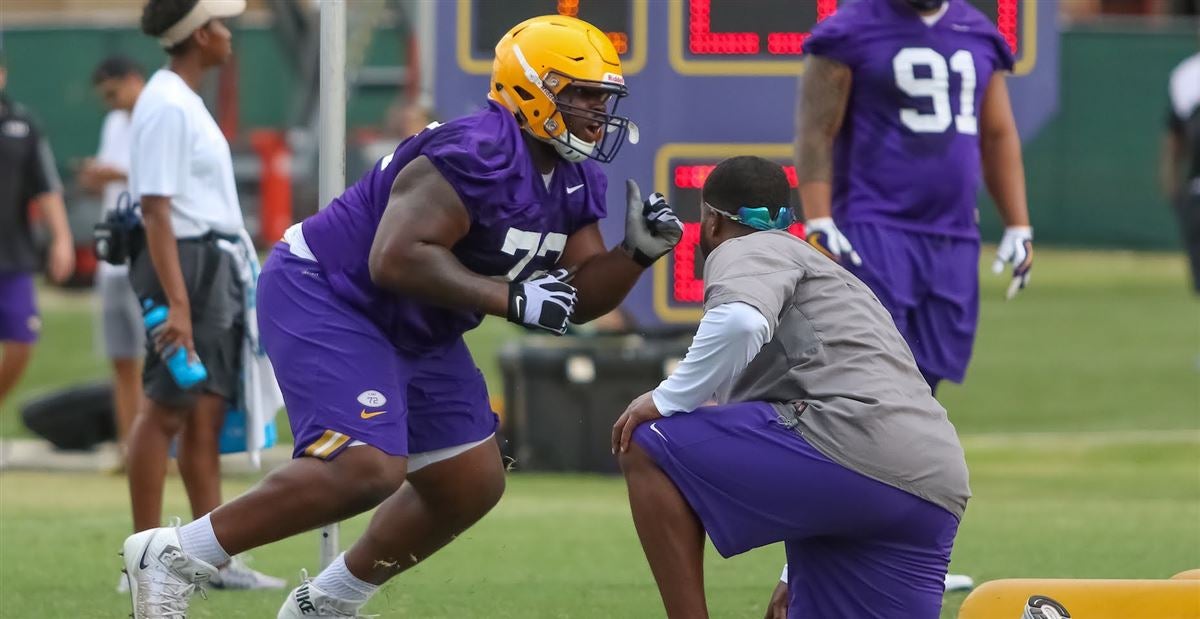
By JAMES MORAN | Tiger Rag Associate Editor
OMAHA, Neb. — LSU rides into the College World Series having won 16 games in a row, the longest streak any club in program history has ever taken to Omaha in 18 trips.
It’s been a total team effort, with every facet contributing its fair share. But when compared to LSU’s middling 27-15 start, the one that had everyone questioning if the Tigers would even host a regional, there’s one area of improvement that sticks out like a purple-and-gold thumb.
LSU’s team batting average has only been a few points higher since it hit that 27-15 mark. It’s ERA, meanwhile, has been a full run lower during a stretch of 21 games in 23 tries.
“The thing that should get the most credit is the performance of our bullpen,” LSU coach Paul Mainieri said.
The Tigers have found those go-to guys in the form of a three-headed monster and an emerging situational lefty.
During the 16-game winning streak, the trio of Caleb Gilbert, Zack Hess and Hunter Newman have pitched to a 0.78 ERA with six wins and four saves. They’ve struck out 44 batters in 34.1 innings while allowing just three earned runs, 18 hits and nine walks.
“If you go back and look at baseball from the historical perspective of teams that’ve been successful, the bullpen is the key,” LSU pitching coach Alan Dunn said. “Yes, starting pitching is important, and yes hitting, but the games are won and lost in those middle innings and obviously in the end. It’s critical to have guys that can get you to the end.”
Newman has been steady since coming back from a back injury, forgiving a high-wire-act of a save in the SEC Tournament finals.
Hess and Gilbert have thrived as hard-throwing setup men who can provide length when called upon. Nick Bush has also come on strong as a matchup lefty who can extend a bit when needed.
Gilbert’s re-emergence has arguably been the most pivotal. He was the interim closer when Newman went down, and performed well until a back-breaking blown save to Texas A&M caused him to fall out of favor.
The sophomore then battled a nasty case of the flu, which kept him out for weeks and cost him 10 pounds.
“After that it was about getting back in shape to be able to pitch at a high level again,” he said. “Just kind of flushing everything that happened with the A&M series to get back to where I was and that laid the foundation for this run.”
Since then he’s thrived as a jack-of-all-trades arm, whether it be a brilliant fill-in spot start in Hoover or stabilizing relief outings in the regional and super regional. He’s picked up three victories and allowed one run in 13.1 innings while striking out 15 in three postseason appearances.
“The longer the season goes on, things start to click,” Hess said. “You start to figure out your team chemistry and what guys fit where. You’ve seen that with this team. Guys have settled into their role. Everyone knows where they need to be.”
The process of finding those reliable relievers was a painful one.
Midweek games are a proving ground of sorts for LSU hurlers, with Mainieri often quoting an old piece of advice the great Skip Bertman gave him years ago: Don’t be afraid to lose a midweek game or a non-conference game early in the year to be able to find out who you can count on.
LSU did — several in fact, drawing the ire of the fan base — but Mainieri and Dunn now know exactly who they can count on come crunch time.
“A few of the games we lost, we were trying different guys,” Mainieri said. “How can you find out if you can do it if you don’t run them out there? We got our nose bloodied with some of those midweek games, but we learned an awful lot about our team along the way.
“I’d much rather be here now with our record the way it is than to have gone undefeated in midweek games and still be indecisive about our personnel.”
Not to name names, there’s several veteran relievers who’ve seen sparse action of late who struggled in those midweek losses.
With only four trusted relievers in the pen, LSU’s relief corps is certainly built on the idea of quality over quantity. But given the spread-out format of the College World Series, where teams don’t play more than every other day before the finals, it seems to be serving them just fine.




Be the first to comment